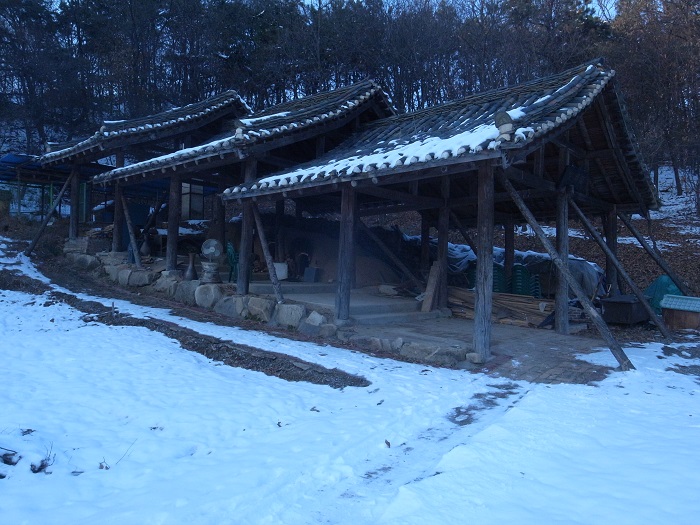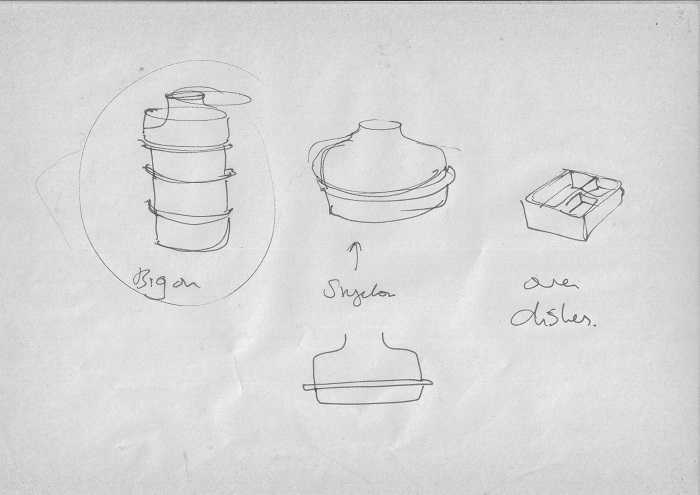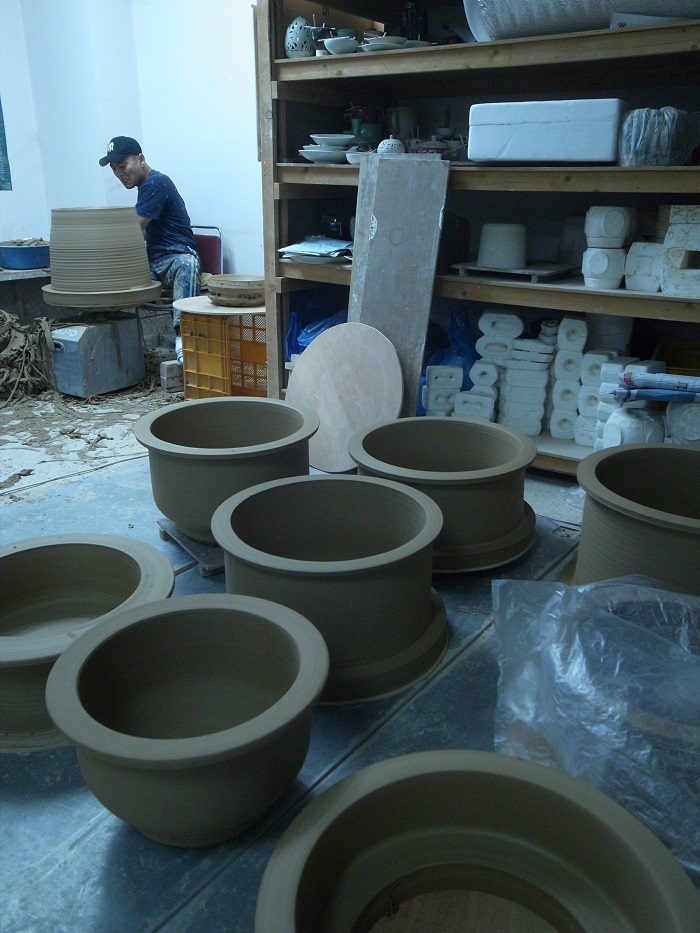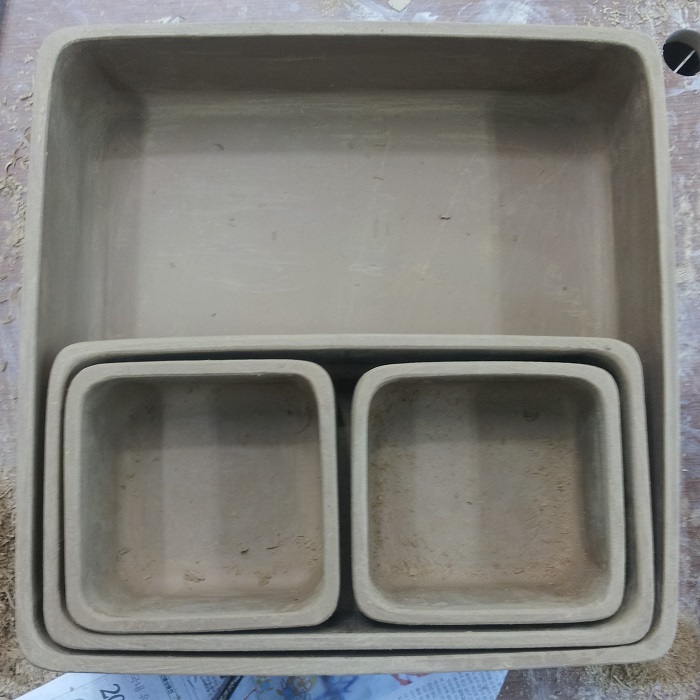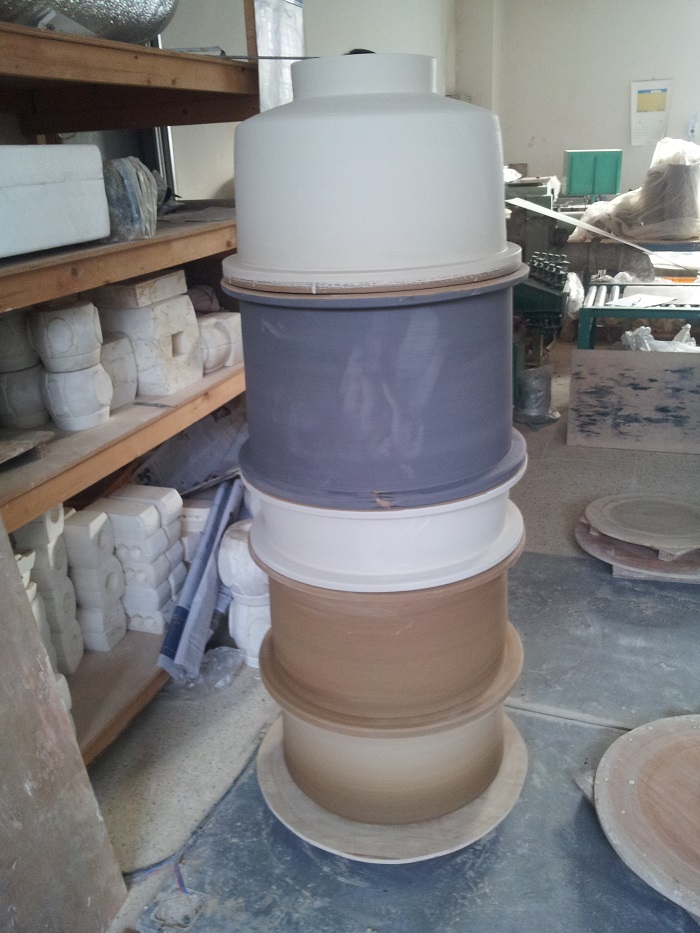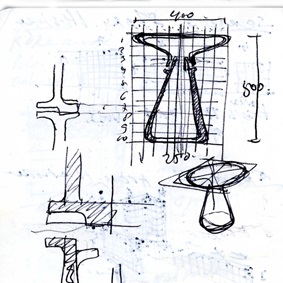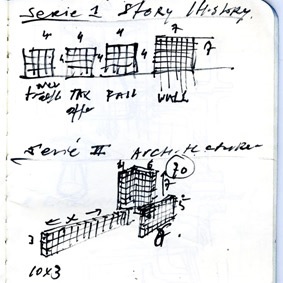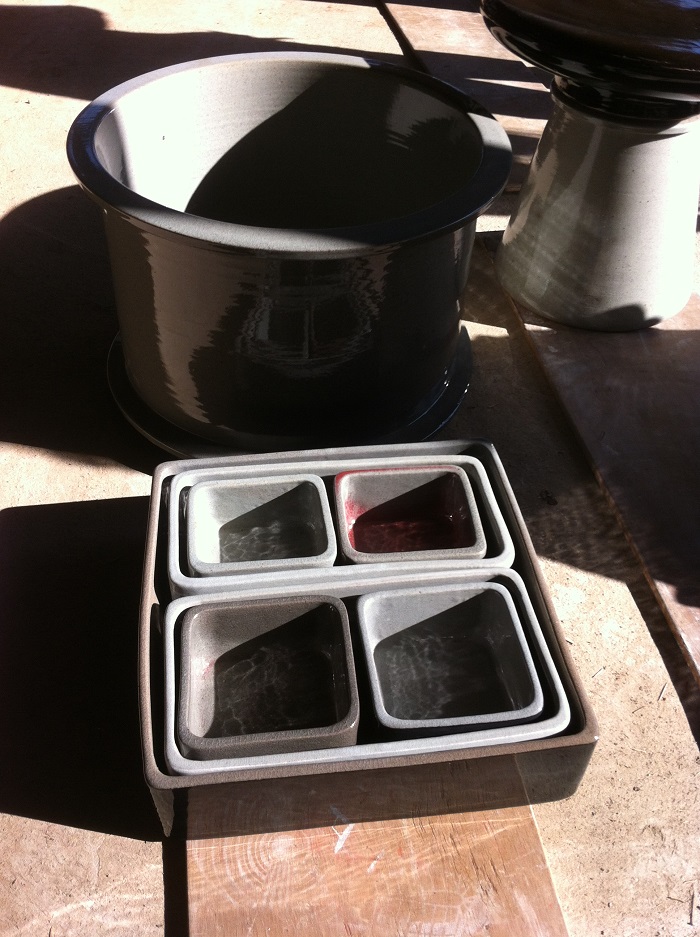I think that Space Croft, our dealer in South Korea, must have been thinking that what he does for Fair Trade in Vietnam can just as easily be done here in Korea. For quite some time, they tried to get me to go to Korea to devise and produce products for their traditional ceramics industry. Once there, it became clear that there were very few similarities to Vietnam; Korea turns out to be a highly developed country. They refer to themselves as the world champion in industrialisation. The tension between Western capitalism, Eastern tradition and a chequered history also make it a very exciting country.
The entire past century was dominated by the suppression of culture; first the occupation by Japan until World War II, followed by a civil war and dictatorship and, finally, the transition to democracy. The people seem to be happy and content and, when asked, claim they have a good life. There has been a separation between North and South (the South being prosperous and Western-oriented) for generations and this is considered an accomplished fact, yet a fact that everyone seems to feel will no longer be a fact within the foreseeable future. ‘The wall’ will fall, as it did in Germany. This will not be the result of war, but the intrinsic human need for freedom and stability and the resulting prosperity.
I’m writing all this down because I feel it is important to understand why they, first of all, were so eager for me to do something with their traditional industry and, secondly, asked me to create an unrestricted and topical design in response to the visit and cultural programme they had planned for Jeanine and I. The designs I had e-mailed based on the information I received were waiting for me when I got there.
At first I was disappointed because, on arriving, I had hoped to see the results and make the necessary adjustments, but it turns out I first had to go through the drawings from front to back. This all took place en grande comité, since a quite sizeable team had put much work and effort into our visit and everyone needed to be present. This is typical Asian behaviour, by the way.
In Japan I was also often escorted by an entire group when trying to get the projects off the ground. Processes are prepared and supervised meticulously to prevent any errors or complications beforehand and to arrive at the right decisions. Even though our company has a culture in which independent and efficient decision-making is highly appreciated, I still felt quite comfortable with all that endless consulting. After all, it’s why I was there.
The first series of designs consists of three products. The most important one is a series of vases, comprised of the largest possible elements they could make. The shape and detailing are based on images they had sent me. They’re enormous stackable vases. The size is determined by what they said was the largest size possible and the colours by traditional ceramics.
After arriving, I learned that everything had been altered slightly and made much more complicated, but by the time I left, the manufacturing process was once again simple and the result virtually identical to the original idea. The ceramicists were exceptionally skilled and came up with solutions to problems I had frivolously overlooked.
Another design intended for serial production is a series of baking dishes, varying in shape from square to rectangular, that fit inside a standard oven. The inspiration behind the design was irritation over the struggle to get one more than one dish on the same rack in the oven and the inefficiency of capricious sizing. The colours of the dishes will match the stackable vases, resulting in a family of products.
Right before I left, I had sent another drawing, this time of a side table. While there, we made 1:1 drawings and adapted the construction method. For the tables, we thought about making a limited edition of 10 different tables, for a total of 100, with more of some models being available for sale than others.
So the second series of designs needed to be inspired by the programme they had put together for us. They also wondered whether I could create something that could be incorporated more into an interior. In the meantime, we came into contact with the university where, instead of traditional ceramics, they worked with high-tech ceramics. One plus one is two: the division between North and South, between Western and Eastern, and between modernity and tradition could be easily symbolised by a wall comprised of building elements.
This represents the current situation in Korea by having a ‘rich’ side with silver and gold glaze and a ‘poor’ side with engobe and raw clay. The in-between phase is expressed in two walls, with the one focusing on the sacrifice and economic statistical reality (in merging, one side must be sacrificed in order to ultimately come out stronger as a whole) and the other focusing on the chaos accompanying an intermediate phase, represented by colours splashed or dripped onto it.
The final wall combines tradition and modernity: engobe, celadon green, raw clay, silver and gold. This is a much too long and weighty story that I did not really indeed to share but, ultimately, was the direct inspiration for the ideas. I think the walls will turn out quite nicely and also interesting in terms of technical development. Between you and me, I also hope the result will be very convincing. The Seoul National University of Science and Technology is working out a plan to make a comparable wall out of porcelain. The two techniques that make it possible to create the walls incorporate the tangible dualism that prevails all around.
This post is also available in: NL
« Back to blog